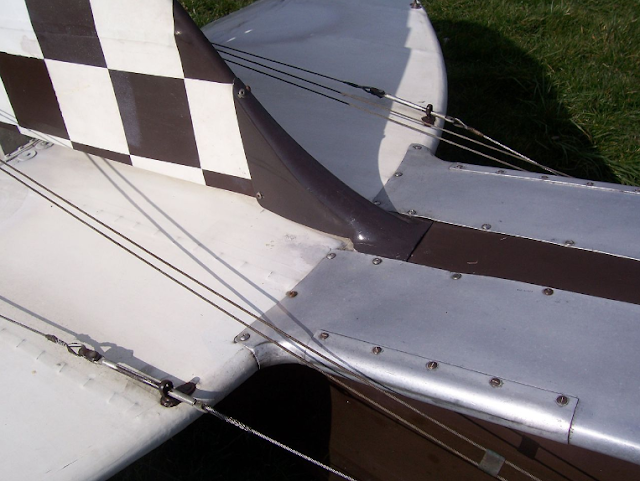Fly-By-Wire Flight Control system
Fly-By-Wire Flight Control system
If you are curious to understand what exactly
happens when the pilot gives input on the control stick, yoke or the rudder, this article is for you.
 |
| Boeing 737-800 Flight deck |
Traditionally, aircraft had steel wires running from the control column to the elevators,
rudders, and ailerons. Elevators control the pitch, ailerons control
the roll and rudders control the yaw. Pitch, roll, and yaw are movements of the aircraft on 3 different axes and it’s the combination of these controls that
make a successful flight.
What happens when the pilot moves the yoke?
 |
| de Havilland DH82A Tiger Moth elevator and rudder control cables |
When the pilot pulls the control stick back the
aircraft climbs and vice versa. On the older jet aircraft, the control columns were
connected to a series of high tension cables and pulleys, so the pilot was
manually controlling the control surfaces. This is called mechanical flight
control. A Cessna 172 is the best example and such trainer aircraft still use
the mechanical flight control systems even today. But back in the day even large jets had mechanical
flight control systems that were later transitioned into Hydro-Mechanical flight
controls that used hydraulic pumps to assist the pilot.
What is Fly-By-Wire?
Fly by wire is a modern flight control system that
replaced the manual flight controls with an electronic interface. This means
the pilot's input is converted into electronic signals transmitted by wires and thus got its name. It also uses a computer to determine how to move each
control surface to get the desired performance from the aircraft. Improved fully fly-by-wire systems interpret the
pilot's control input as the desired outcome and calculates the control surface
activities required to deliver that outcome; this results in different
combinations of the rudder, elevator, aileron, flaps, and engine controls in
different situations using a closed loop.
The need for Fly-by-wire
The traditional mechanical flight control systems were
heavy and risky because the high tension lines that controlled the surfaces
were subjected to constant wear and tear making it prone to snapping from
fatigue stress. If the tension lines snapped the pilots would certainly crash
because there were no backup systems. Most importantly this type of control system relied on
the muscular power of the pilot and he had to physically fight the control
sticks during non-normal situations like wind-shear or stalls. This made it unsafe in large jet aircraft. The Hydro-mechanical
control system gave a solution to the physical strain the pilots had with the
traditional mechanical controls but also added a considerable amount of weight
to the aircraft making it less efficient.
The first few airliners to have fly-by-wire
The first airliner flown with fly-by-wire was the Avro
Canada CF-105 Arrow in 1958, the next feat achieved with FBW (Fly-By-Wire) was the Concorde in
1968, the Concorde’s FBW also included solid-state components and system
redundancy was designed to be integrated with computerized navigation and
automatic search and tracking radar was flyable from ground control with data
uplink and downlink, and provided artificial feel (feedback) to the pilot. The A320 was the first airliner to have a full glass
cockpit and a modern FBW system based on control laws.
The basic operation of Fly-By-Wire
Closed feedback loop control
The pilot commands the stick to make the aircraft
perform a certain maneuver by moving the sidestick or control column, the
flight control computer then calculates what control surface movements will
cause the plane to perform that action and issues those commands to the
electronic controllers for each surface. The controllers at each surface
receive these commands and then move actuators attached to the control surface
until it has moved to where the flight control computer commanded it to. The
controllers measure the position of the flight control surface with sensors
such as LVDTs.
Automatic Stability Systems
FBW systems allow the computer to perform tasks
without input from the pilot. The aircraft is equipped with many sensors
and gyroscopes that sense small movements in pitch, yaw, and roll mainly due to
weather and corrects them to maintain stability. This makes the flight smoother
since it’s impossible for pilots to manually make such minor movements in such a quick time.
Safety in FBW
If a traditional mechanical or hydro-mechanical
control systems fail than it renders the aircraft uncontrollable and would
result in a fatal crash since the pilots have no control on the control
surfaces. But FBW incorporate the meaning of either redundant computer there would be 3 or even 4 independent channels in case one or even 2 fail the
Another channel takes over to provide the electrical signals.
 |
| Internal configuration of Airbus A320 sidestick |
Some aircraft have Hydro-mechanical
control systems as a backup in case FBW fails for example the Boeing 777. The above picture is the internal configuration of the sidestick of the Airbus A320. In conclusion, Fly-By-wire
is a technological advancement in aviation that simply has no cons, makes the
aircraft fly smoother and incorporates a higher level of safety.
Thanks for reading!






